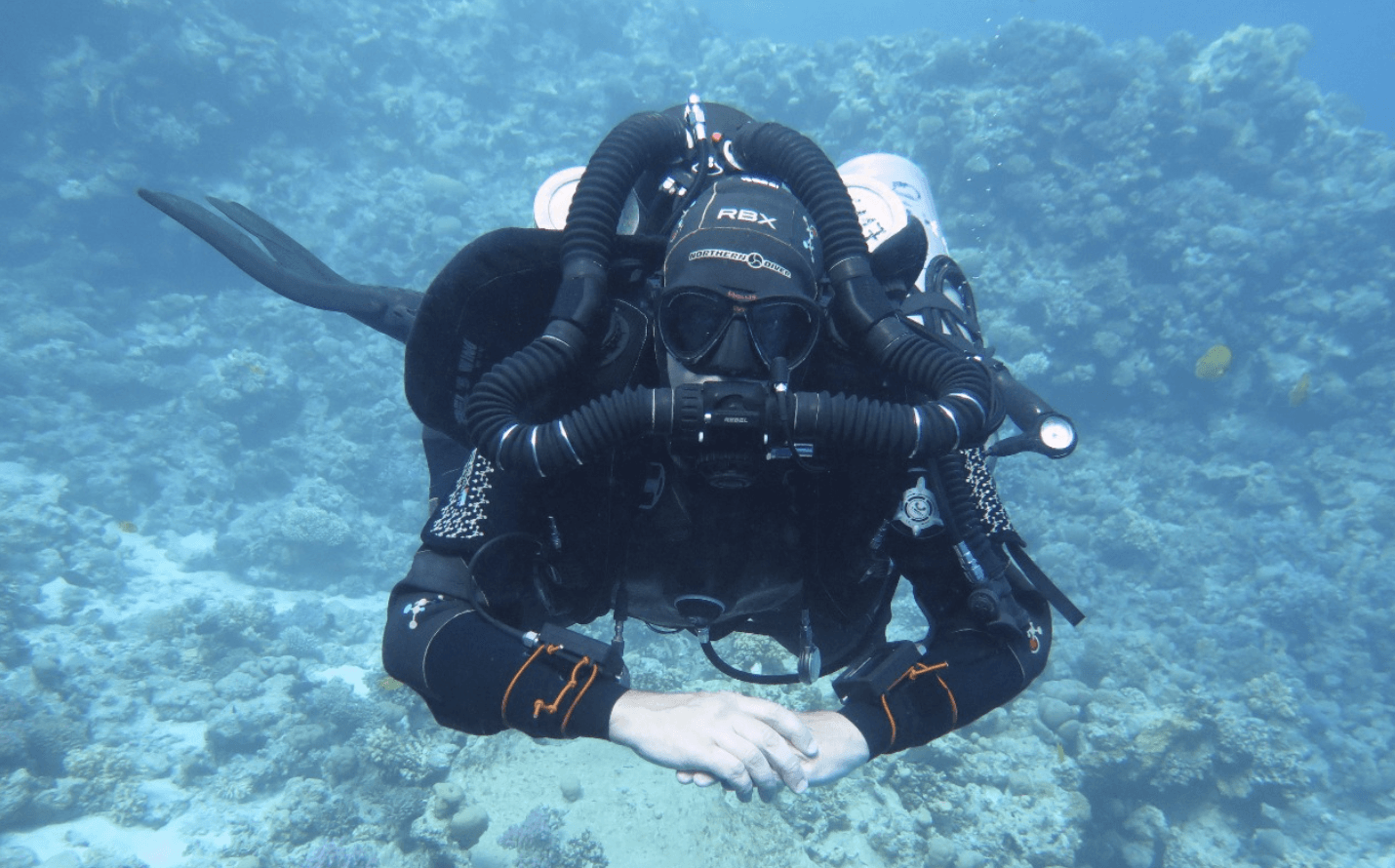Why Dive With A Rebreather
Q & A Below
Rebreathers offer a new experience and /or challenge and enable you to get much closer to marine life as there are fewer bubbles and less noise. Rebreathers have practical benefits such as greater dive duration, longer no stop time, more efficient inert gas management and more efficient use of your breathing gas as well as the physiological benefits of Nitrox diving. In addition, if you are planning to dive in colder waters the warmer breathing gas gives some benefits.
Why must you have Nitrox knowledge to dive Rebreathers?
Mixes other than Air (20.9% Oxygen and 79% Nitrogen) are generally used with Rebreathers and therefore the diver must understand the considerations of using Nitrox for recreational diving.
What are the main differences of Rebreathers compared to a normal diving set?
The diver no longer experiences a change in buoyancy when breathing in and out. Furthermore the diver’s buoyancy can now affected by up to three independent gas volumes, namely the diver’s lung / Rebreather counter-lung, the BCD or wing and the dry suit. These all have to be considered, particularly in an emergency.
What are the basic differences between closed and semi closed circuits?
Semi Closed Circuit Rebreather (SCR) units such as the Dräger Dolphin and the San-o-Sub Azimuth use a pre-selected, constant flow, Nitrox mix that is chosen to match the Maximum Operating Depth (MOD) of the planned dive. Venting of excess gas occurs periodically during the dive and ascent.
Closed Circuit Rebreather (CCR) units dynamically mix 100% Oxygen with a diluent to form a breathable gas mix. For entry-level Rebreather diving, the diluent used is air and this combines with 100% Oxygen to form a Nitrox mix. For deeper dives the diluent gas may be Heliox or Trimix, depending on the Rebreather manufacturers’ recommendations. This mix varies continuously with depth to maintain a pre-selected PO2 set point. Venting of gas only occurs on ascent due to expansion.
How many dives can a Rebreather diver perform each day?
The entry level Rebreather diver will be governed by the normal considerations of Nitrox diving such as CNS loading, UPTDs and decompression considerations. Mixed gas use in sport diving is still in its infancy. Mixed gas computers will allow the diver to conduct more than one mixed gas dive per day. However, it is good practice to limit deep diving to one excursion per day.
What are the main considerations of Rebreathers when compared to a normal diving set?
Considerations are the same as open circuit air, Nitrox or mixed gas plus a few more. These additional factors include increased risk of hyperoxia, hypoxia, and hypercapnia. The diver must take a meticulous approach to both diving equipment and diving practises when diving with any form of Rebreather. Consequently adequate consideration should be given to: using a stable dive platform; avoiding task loading during all stages of the dive including the preparation of the unit; avoiding adverse diving conditions such as dives with “saw-tooth profiles”; ensuring good buoyancy control especially during ascent and descent.
Why should a Rebreather diver always pre-breathe the Rebreather before diving?
Pre-breathing the Rebreather warms up the absorbent material towards its optimum working temperature before the dive begins. Pre-breathing also allows the diver to confirm that the Rebreather is functioning correctly whilst you are safely out of the water. Very importantly, pre-breathing is your only check for CO2 contamination before your dive. If you get a CO2 hit whilst pre-breathing on the boat or land you will survive. Underwater might result in a different outcome!


